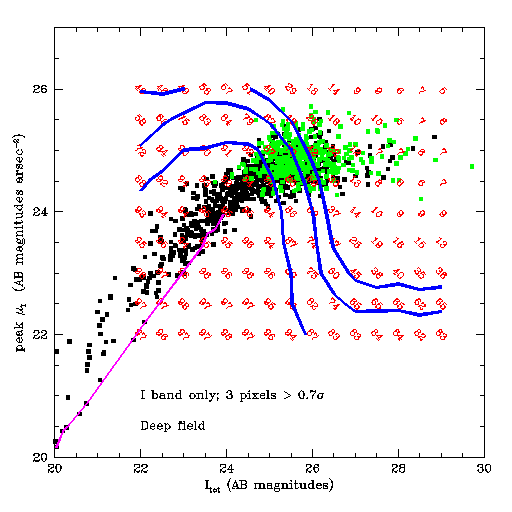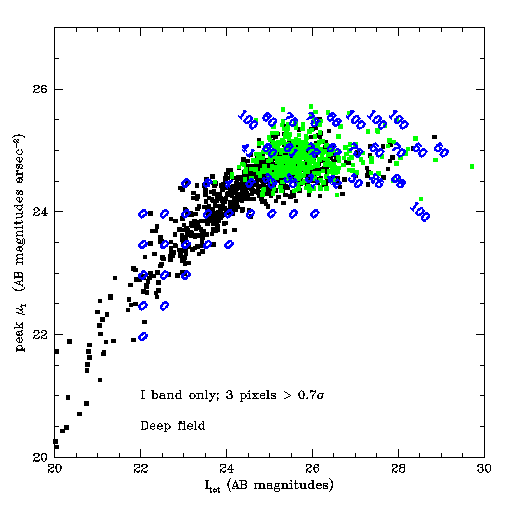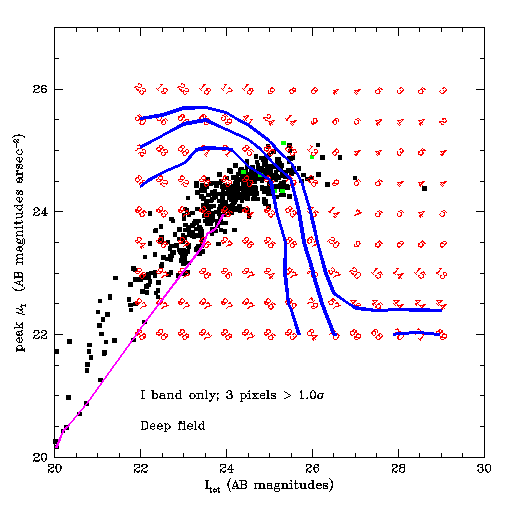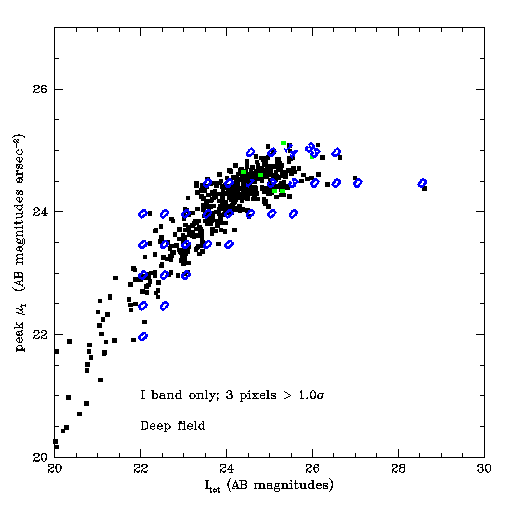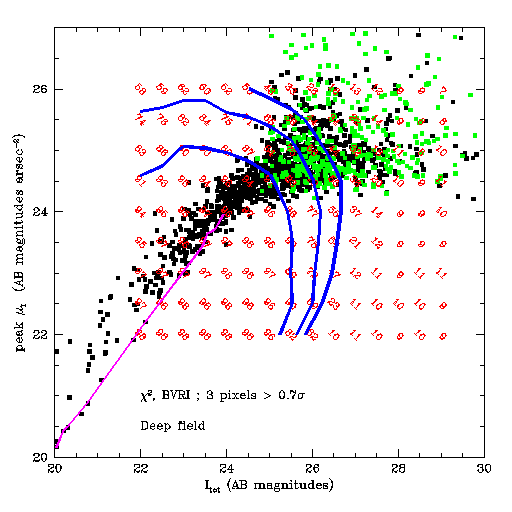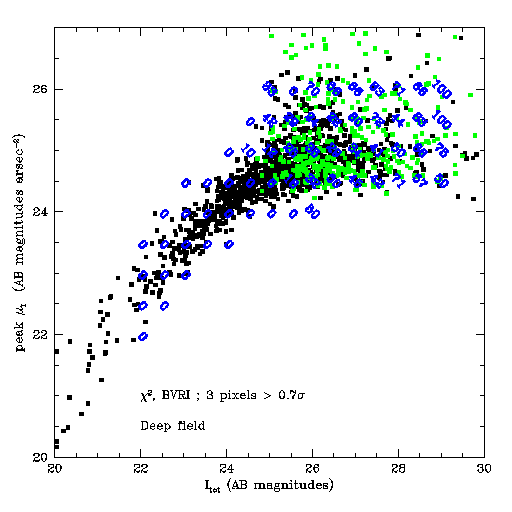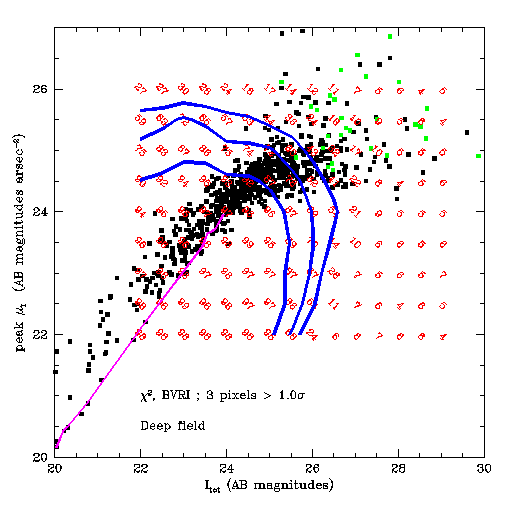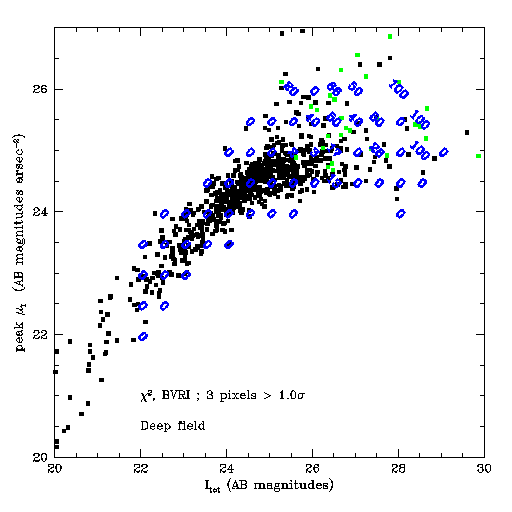parameters.
The image subsection was provided by Henry McCracken. It is a portion of the 2 hr field. I have further reduced the image in size (to speed the iterations) to 1024x1024 subsection. The entire subsection is imaged to the same depth; that is to say, the weighting is uniform. This is obviously a much simplified version of what will be a much more complicated problem.
The Fortran program (addgal4.f) adds
galaxies to all four images. Initially, the added galaxies were modeled
with an face-on exponential profile. (See version
1 of this page.) However since only a few galaxies will have such profiles,
more realistic galaxies are now added. Further, since the effects of seeing
are important, one must convolve the exponential profile with a Gaussian.
This will alter the surface brightness, making it hard to generate galaxies
with the correct surface brightness.
Although one could add galaxies with exponential disks, tilted, appropriately
convolved with the seeing, mixed with some deVaucouleurs profiles, the
easier and probably more realistic approach is to use the galaxies in the
field itself. The other advantage of this method is that the colours of
the galaxies will automatically be typical of the field. (Although there
will some small effects; colour is probably correlated with magnitude.)
A set of 100 bright, isolated galaxies was selected out of the field and ssembled into a master list. Postage stamps of these galaxies were cut out of the field. In order to test the magnitude limits, the galaxies are made fainter. This done by dividing the postage stamp by some number to scale it down to a fainter total magnitude. Testing the surface brightness limits is trickier. To make a galaxy fainter while keeping its total magnitude constant, one must spread the galaxy out, extending its wings. This was done by resampling the original galaxy images at sub-pixel resolution, interpolating as necessary, using bi-linear interpolation. In this way it possible to take a bright galaxy and fade it out to any surface brightness and total magnitude.
Each time addgal4 is run, it adds 40 galaxies. Adding more generally results in artifically low completeness especially at bright magnitudes, as the galaxies start to overlap with each other and with the real galaxies. As it is, the maximum possible completeness is about 98-99%. All the galaxies are of the same brightness (I and µI).
The galaxies are selected at random from all the galaxies on the master list. Only galaxies brighter than the desired magnitude/surface brightness combination are used: brightening a faint galaxy is obviously undesirable. Each galaxy is then faded and smeared to the desired magnitude/surface brightness combination and added to the image. The program then writes the image and the location of the added galaxies to disk. Galaxies are added to all 4 of the BVRI images, although currently, only the I band is used for detection. The figure to the right illustrates this procedure.
One can then run SExtractor to retrieve the artifical galaxies, with whichever detection criteria are desired. This process can be repeated several times for a range of magnitudes and surface brightnesses. The process needs to be run about 10 times at for (I, mu_I) pair. Currently, this process is controlled with PERL script: compchi.pl
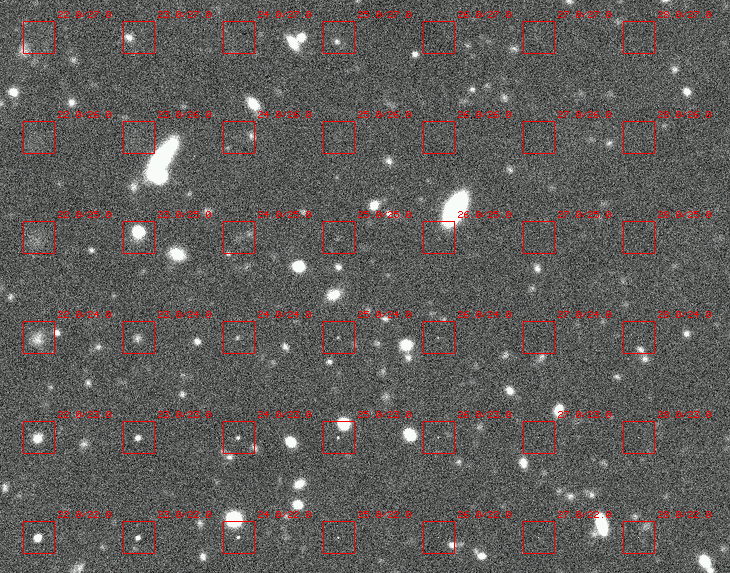
An illustration of adding galaxies: The same galaxy has been added multiple times to the image. The galaxy has faded to various magnitudes and surface brightnesses. The boxes contain the galaxy. The boxes are labeled by mag/surface brightness. Note the galaxy at I/µI =23/25 accidentally ended up near a bright galaxy and is only partially visible. The I band is shown here. Normally of course, the galaxies are not placed in such a regular grid.
